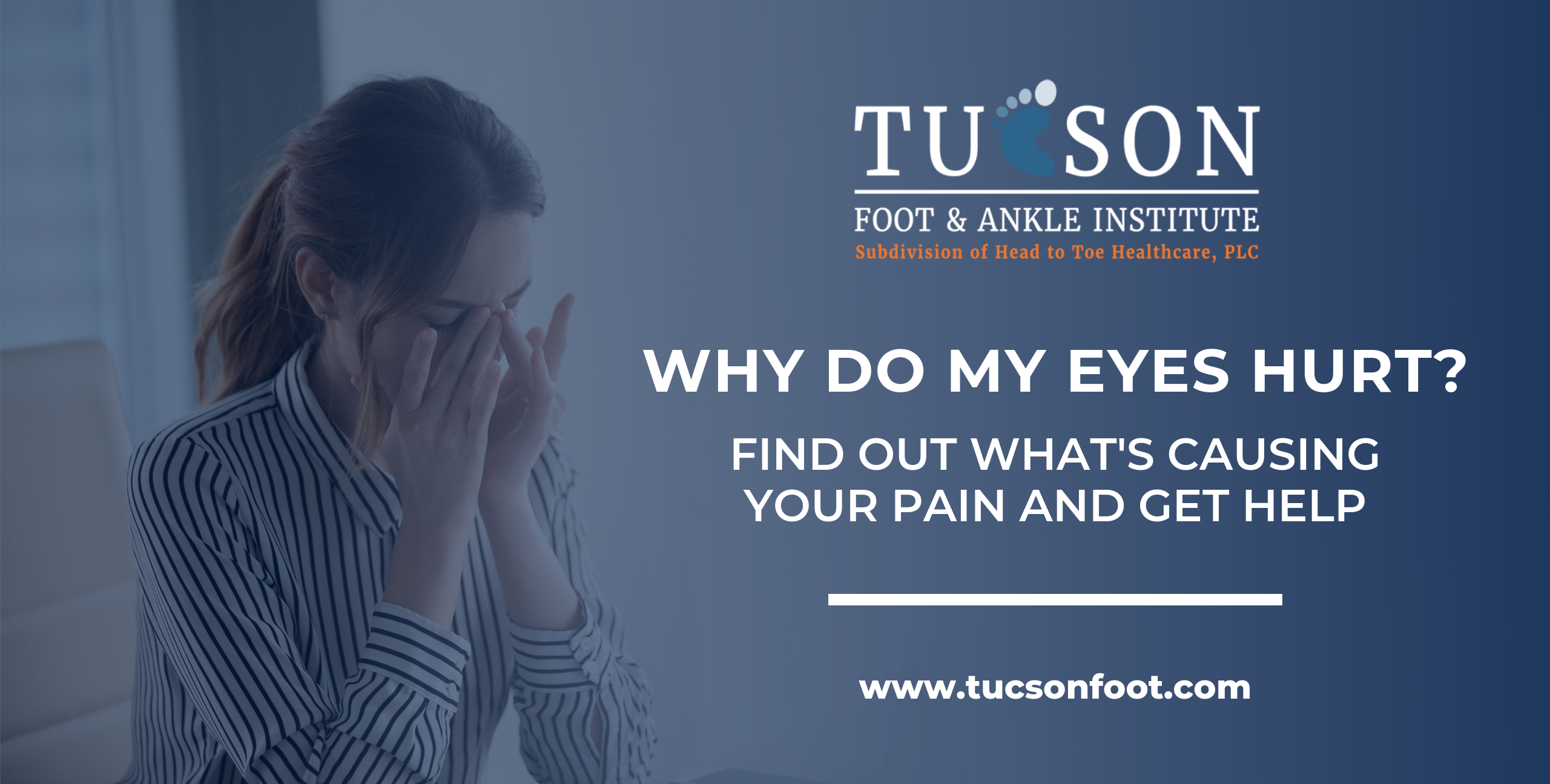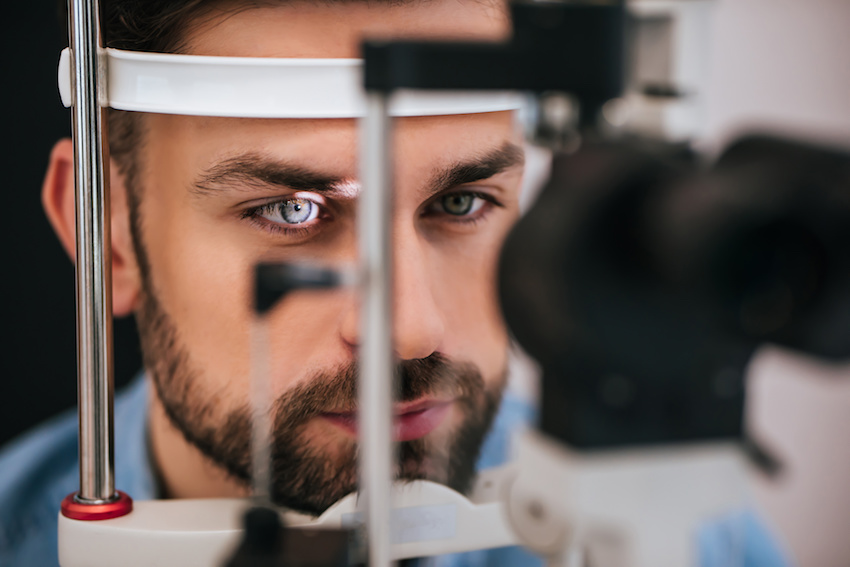Why Do My Eyes Hurt?
Your eyes and your vision are, obviously, among the most essential of your biological resources. So it can be quite disconcerting when your eyes are suddenly hurting for seemingly no reason.
At best, you’ll find it much more difficult (if not impossible) to go about your daily business if eye pain is causing you headaches or making it difficult to see clearly, drive safely, or focus on details.
At worst, you may have developed an acute eye condition that, left untreated, might even cause permanent damage to your eyes or your vision.
And unfortunately, there are quite literally dozens of different conditions or situations that could cause eye pain. So while you might have a good idea of what specifically is bothering you, you also might not—and you might not be able to figure it out on your own, either.
That’s why any significant or persistent eye pain you experience should be examined by the professionals at Tucson Eye Institute. Not only do we have the training and tools to correctly diagnose you, but we also specialize in the treatment of acute eye conditions—so please see us as soon as you can! It’s not worth the risk.

Causes of Eye Pain
Keep in mind: This is far from a complete list. However, let’s go over some of the most common causes of eye pain we see and treat at the Tucson Eye Institute.
Foreign Objects
In short, something got stuck in your eye. It could be an eyelash or dried mucus, a speck of dust, or any other tiny object or irritant that manages to sneak past your eye’s defenses.
You can usually tell when this is your problem, as the feeling of something being stuck in your eye is pretty unmistakable! Pain tends to spike every time you blink.
Often, attempting to remove foreign matter yourself can make the pain worse, and an object embedded too long in the eye can trigger an infection. So when in doubt, please seek our help as quickly as possible.
Corneal Abrasions
“Corneal abrasion” is just a fancy way of saying the clear surface of your eye has been scratched somehow—usually by a foreign object, but sometimes by wearing contacts or in certain accidents. In addition to pain, watery eyes and sensitivity to light are common symptoms.
Since we’re talking about a physical scratch from a specific incident, the pain is almost always going to be concentrated in a single eye.
If the scratch is superficial, it may heal on its own. However, worse scratches can get infected and develop into much more serious corneal ulcers—which can lead to blindness in the eye in relatively short order if not treated by a professional.

Dry Eye
The pain of dry eyes tends to feel stinging, burning, or “scratchy.” Redness and light sensitivity are also common symptoms. Sometimes the sensation is temporary, but most often it becomes a chronic condition.
Dry eyes can be related to a wide variety of different conditions, illnesses, or mechanical problems within the eyes. It could be that your eyes aren’t producing enough tears. But it could also be because the tears are of low quality, or are evaporating too quickly.
Since the underlying causes of dry eyes can vary significantly, we’ll need to assess your condition and identify the root problem before making a treatment recommendation.
Conjunctivitis (Pink Eye)
True to its name, pink eye often leaves the eyes looking pink or reddish in color. Other common symptoms include itchiness, excess tearing, and crusty discharge. It may affect one or both eyes.
Conjunctivitis is caused by an infection of the conjunctiva, which covers the (ordinarily) white part of your eye. The infection may be viral or bacterial, or even an allergic or chemical reaction. In most cases it’s also highly contagious, so getting it treated soon should be a top priority.
Blepharitis
In this condition, the eyelids (usually both—top and bottom) become inflamed, reddish, and swollen. It can be quite uncomfortable, and also itchy. The most common cause is clogging in the oil glands at the base of your eyelashes.
The good news is that blepharitis usually does not pose any significant risk of long-term damage to your eyes or vision. The bad news is that it is often chronic and can be difficult to treat in a permanent way—you may simply have to learn to deal with daily washing and eyelid scrubs. Still, we can provide additional medications and treatments if necessary.
Acute Angle Closure Glaucoma
Glaucoma is a disease (actually, a group of diseases and conditions) that damage the optic nerve. That damage is usually caused by a build-up of pressure inside the eye, due to an inability for eye fluid to drain properly.
In the acute angle closure form of the disease, the pressure may rise quite suddenly. The result may not only be severe eye pain, but also headache, nausea, vomiting, and rapidly worsening vision.
If you believe you may have this form of glaucoma, know that it is a medical emergency and you need help right away. You are at severe risk of permanent blindness if you don’t take action.
Cluster Headaches
Cluster headaches are not an “eye condition” per se, as the most likely cause is a faulty facial nerve. They can still cause intense pain around and behind the eye, however. Cluster headaches tend to be intensely painful, affect one side of the head, reach full force quickly (as little as 5 minutes), and are relatively brief (30-90 minutes on average).
If you’re prone to cluster headaches, speak with your general practitioner. He or she can help you, at the very least, identify your triggers and provide medications to help limit the frequency and severity of attacks.


Don’t Underestimate Eye Pain
Remember that eye health is something you should never gamble with. Your vision is irreplaceable.
And while most temporary, minor causes of eye pain may go away on their own, others may be an early warning sign of a more serious condition—if not a full-blown emergency with permanent vision loss as a realistic possibility.
If you ever notice painful, swollen, itchy, dry, or uncomfortable eyes for any reason, don’t roll the dice. Give Tucson Eye Institute a call, and we’ll get you the treatment you need. You can reach our office at (520) 545-0202 today.
